Article resurrected from old site Multiply/B-cozz
Here’s a M72 breather.
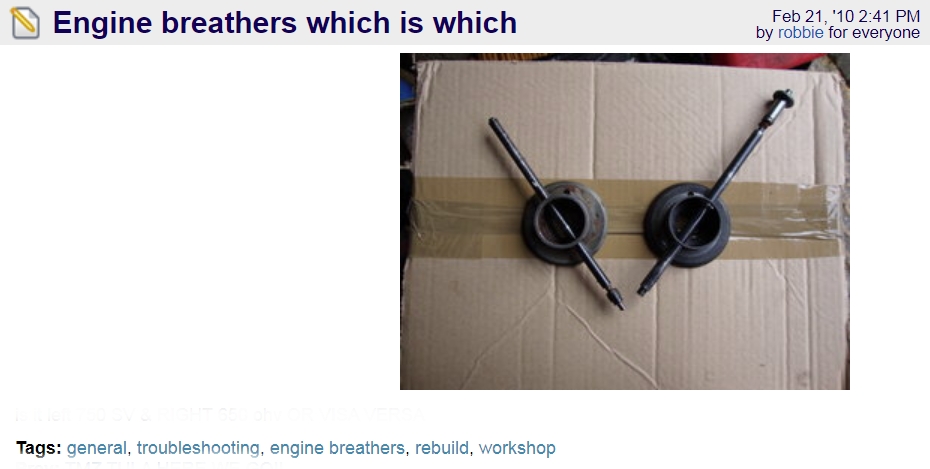
From Robbie (Chunky) Shergold’s on the old site in 2010. Robbie also built up a Tula 3-wheeler into the best Tula little camper on the planet! Chunk UR legend!
Robbie has queried why there is more than one type of engine breather used on the USSR boxers and why are they different? That’s a good question.
Imagine a newbie trying to restore an old engine from a box of bits that could well be a mix of Ural, Dnepr, and even older M-72 parts. Reading this might save someone one hell of a headache. Thanks Robbie for bringing this topic up.
Robbie: is it left 750 SV & RIGHT 650 OHV or VISA VERSA?
comment: JD: Robbie let’s look at your photo again. What would the effect be if the wrong one was put in? A real Murphy’s Law moment!
comment: Roma: 650 OHV left and 750 SV right. This is how it is with my MT11 and MV750.
comment: Robbie: Thanks Roma & JD, I will have to pop off the front cover & check what is in the MT12 (SV Ed.) she seems to run fine plenty of grunt & go perhaps its the the added crankcase pressure or not as the case maybe. BTW the clutch rod on the right had collapsed & welded itself back together including welding the thrust bush on the end! You never know when you will need a drift/punch or bit of steel rod so that’s why I kept them.
JD: Chunky, amazing, we will worry about the clutch rods later ok, this is about the engine breathers!
JD: I spoke to Jan on the phone just now and he is going to take some photos of his (1969 Ural OHV M-63). Fascinating! Jan has sent in some photos of his Ural M-63 breather, and trust you Jan, always full of surprises, its different again! Note the cut-out on the side for the locating pin, instead of a hole!
SteveW: Jan’s is upside down compared to the other two.
JD: How convenient Jan was doing an overhaul right now.
JD: Looking at the breather I have with the red pencil, with the hole on the RIGHT, is 1974 Dnepr OHV MT-9. I’ve just had it sitting there for the past 30 years! But because I also had several Urals and a ton of spares I just wasn’t sure without stripping a motor.
JD: Chunky, I’m sure the one on the left in your photo (which has the hole to the right) is Dnepr 650. You would expect that it WOULD matter, as its the crankcase ventilation timer, and thats an important value you would imagine.
Chunky: I have looked on URAL ZENTRAL ETC & they list two different part numbers for the SV & the OHV but show the same breather in the picture (the one on the left)
Edit by Catwesel 2021, It still is after so many years, very confusing !!
JD: Chunky, where did you get them from?
Chunky: I had the left one that was fitted to one of the MT9 engines I have (I haven’t stripped the other) the right one arrived with some OLD SV bits, I am pretty sure my DNEPR SV 750 has the left one but without stripping I cannot remember (this could have been fitted in error though in the past though!) and I know that if you take the tappet covers off when she is running she really chuffs out of those so she’s got loads of crankcase compression. So the one on the rights a bit of a mystery or its the right one for the the DNEPR SV 750 it differs in the thickness in the ring but has the same outside dimension and that the breather holes are in a different place.
Roma: It is due to the location of the cavity in the front casing that directs the air out of the breather. The 650 OHV has the breather exit near top of engine on left (facing engine from front). The SV engine is lower left (facing engine from front). It would be very bad if swapped. Both have another hole 180 degree out.
Chunky: Well, I did what I should have done in the first place!, I took the front case off my SV MT12 and I can confirm that mine has the one on the right (although I must admit it got me wondering) so that must be the correct one for the SV DNEPRS at least, don’t know about the m72 or Urals though.
JD: Mr Catweazle or others with early IMZ M72 might be able to share their observations. I’ll ask.
catwesel: Question from a member of the UDCN, I’m not been busy with this subject of debate 🙂 So plz bare with me, I will find the time to look into this !
The question is, are there front plates where the hole is on the other side ?
I.E. differences between Ural, Dnepr, Flathead or OHV ?
grtz From Cat
®Catweazle sent these photos:
Have made an picture from an K750 plate and from one of the M72’s
As you can see there’s a difference how the pipe is placed .
Don’t know how the inside looks like, and I don’t tear it apart for some pics ! 🙂
Will have a look if I made a pic before I’d put everything together. Have a nice day – Cat
Does anybody know something about timing of the breather (releasing the “over” pressure in the engine) Think it should be the moment just before the pistons are in the absolute down position? Or on the way down ? Something to think about ?? 🙂
grtz Cat
JD: Talking to Catweazle about all this I will copy this from my manual for Dnepr K-650/MT-9 which is overhead-valve (OHV) says:
“During engine operation part of the combustion mixture and exhaust gasses break into the crankcase through the gaps in the piston rings. When the pistons move down, the volume of the crankcase diminishes and the pressure inside it grows which may cause oil to squeeze through the oil seals (glands) and through the joints between the crankcase and the covers.
To avoid this the crankcase inner space is connected to the air through a breather fitted in the central hole of timing gear box cover (front engine timing chest). The breather allows to ventilate the crankcase, when the pistons move down and isolate it from the atmosphere when the pistons move up (towards the head).
The gasses which pass from the crankcase through the breather always contain water steam which in cold season may turn into ice and block the breather pipe, thus preventing gas flow from the crankcase, due to which oil will leaks through the seals.”
Cat: Hi all, and special hi for JD.
Havin’ problems with Natasha, after a few times runnin’ I noticed she build up pressure!
Noticed it after she started whistling besides the generator 🙁 Removed the heads and the valve cover, when the pistons go down/in air blows out the valve compartment !!
Hope to check it further this weekend but it must be the breather!! Guess I have the wrong type of breather inside !!!???
Will be continued…
grtz Cat
Cat: Sh***TTTTTTTTTTTT, removed the front of the engine, took out the breather………………..it’s a good one !! What the heck is going on ????? Now I have to investigate further what the problem is and what cause this air pressure! Can it be a valve that isn’t closing ?????????? I doubt it, because it’s really a lot of air that is coming out !! will be continued, sigh
grtz Cat
comment: wojciechnosko (Poland): Roma, You have it right, left is ohv, right is sv, difference is because of different breather hole position in cam shaft cover. Catwesel, checking breather is easy, just see if there are leaks of oil from gasket between engine case and oil pan if so then probably you have wrong breather or drain pipe is stuck, if air blow from air flow pipe during engine work and there is no leaks then I wouldn’t worry about it, it is normal that you can hear air flow from the valve push rods when valve cover is removed and piston move down , so do not be alarmed, as for timing of this valve I have SV engine data here it is, http://wojciechnosko. [now defunct link]on the drawing which I made myself I use polish names translating is
GMP is TDC (Top dead center)
DMP is BDC
otwarcie przed DMP means OPENING BEFORE BDC
zamkniecie za DMP means CLOSING AFTER BDC
this data is from M-72, only difference between M-72 and other SV Russian engine is diameter size of the valve itself in later version of SV engine such as K-750 MB , or MT-12 diameter of the breather is bigger
comment: wojciechnosko: Answering question of catwesel about position of the hole in valve plate (not in the tube), yes position of this locking pin is same , in Ural I’m not sure where it start, but because lock pin in timing gear was often bent due to pressing in process they start to make this U shaped hole in the flange , I also had this problem with mine breather, all set (gears and valve) was new , but when I assembly front cover (without putting in screws) I noticed that all, breather valve and cover oscillate due to bent lock pin , it took some hours to correct it , but I think cutting U shape would be much faster. So old Ural until I think M-67 have same position of the air flow pipe . Even tho I do not think Ural valve can be used in K-750 or M-72 due to diameter and length which is different. SV engine have all pipes pointing down as well as old Ural, Dniepr looking from front of the motorcycle to the back have air from pipe on the left side of timing shaft on the top of the cover, Ural have on the right side on the top, so position of the holes in the tube have to be different
Aldo in Italy emailed me off list and asked me to post up these 2 drawings:
Hi JD, please post for me these pics and this text in blog “engine breathers which is which”
I don’t think it’s for air pressure,because there’s always the “door open” from the inner case to the atmosphere. At least on Dnepr .In the first pic you see the holes circled in red which make one volume of the internal engine together the house of the timing gear and centrifuge. In black you see the real breather that takes out the air. In the second pic the exit door to the atmosphere – Aldo
OHV KMZ Dnepr K-650/MT-9 etc breather outlet connects to oil bath in air filter
Aldo! I used this photo of yours! (above) to highlight the location of the breather tube (vent) on Dnepr OHV.
Aldo: And the holes for the mandrel used to take off the front housing (same height of the crankshaft) are the ones that make same the space of the engine and the front cover.
Aldo: Thnks JD ,In my opinion the breather on the camshaft has a different aim. The pressure inside the engine, despite the real breather which goes to the air cleaner (OHV Dnepr), could be high enough to push some oil through the gland that seals the camshaft from the spark distributor.The radial grooves on the rear face of the disk (“breather” on the timing gear) reduce the pressure of the oil mist and allows it to lubricate the hole in which it goes inside. So, grooves, inside the internal cylindrical part of breather , through the “oriented” hole and ends on the surface of the front casing hole where the breather goes in. On Dnepr I guess this is the matter.
Catweazle says he has noticed two types of breathers for the 750 sidevalve?
In retrospect, this must be what Wojciechnosko was telling about, M72, left and the later with bigger diam. on the right for K750MB or MT12.
JD: PS. When I was young and stupid I decided to clean the centrifuge on my Dnepr, shouldn’t have bothered, there was hardly any buildup inside it. BUT… shortly after I had put the front timing chest back on (yes with gasket and glue!) I noticed the engine breather sitting on my shelf! I think I beat a world record, dismantling the front cover, re-installing the engine breather, and the front timing chest cover, before the gasket glue dried. Just to mention, do not get distracted from the job!

So there it is!
Abbreviations used:
SV – Side-valve
OHV – Overhead-valve
TDC – Top dead center
BDC – Bottom dead center
retrieved from the archives by JD
Wojciech Nosko Poland! here you were a valued participant years ago, before website crash. We want you to join us again! JD finds you at WRENCH, love your work! How to say hello!
JD


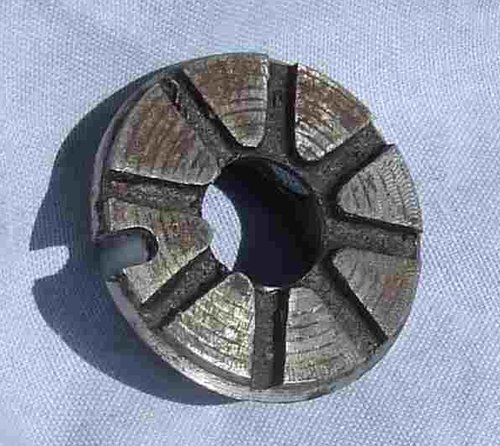
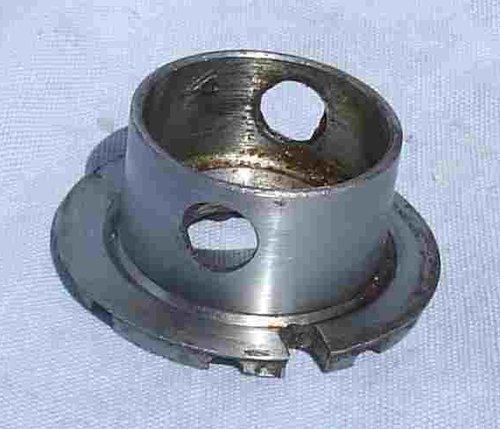


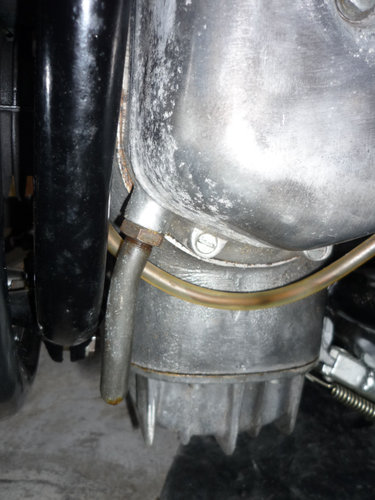
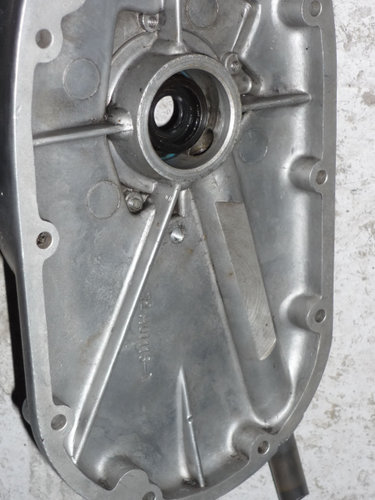
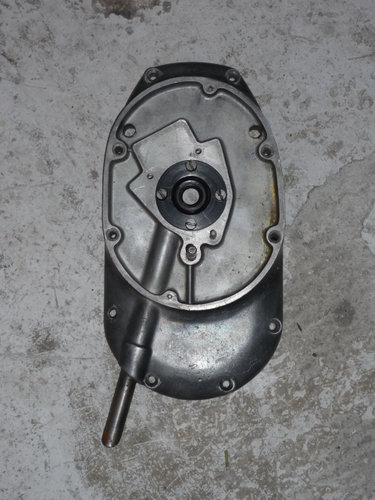
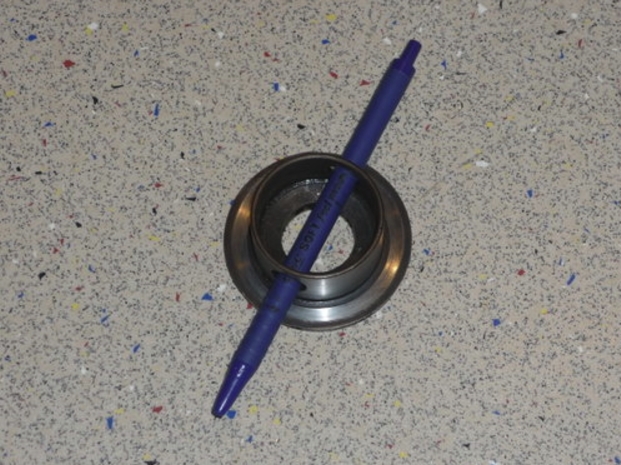
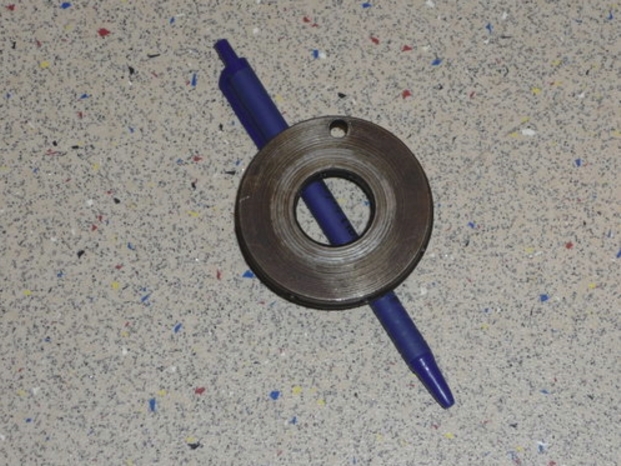

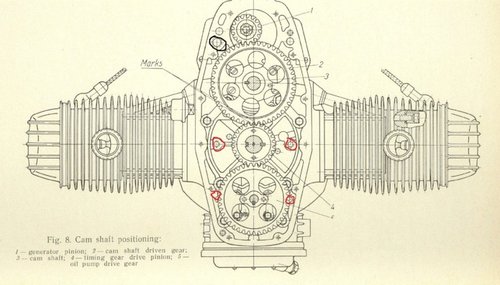
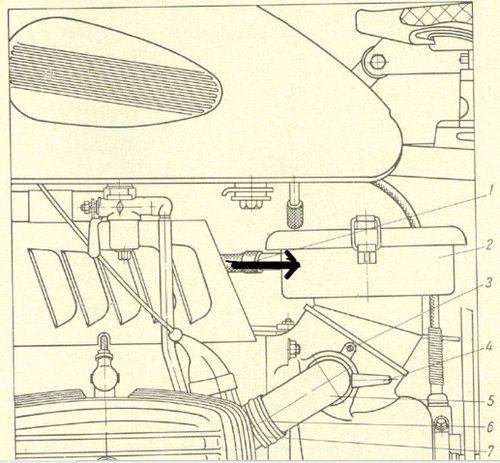

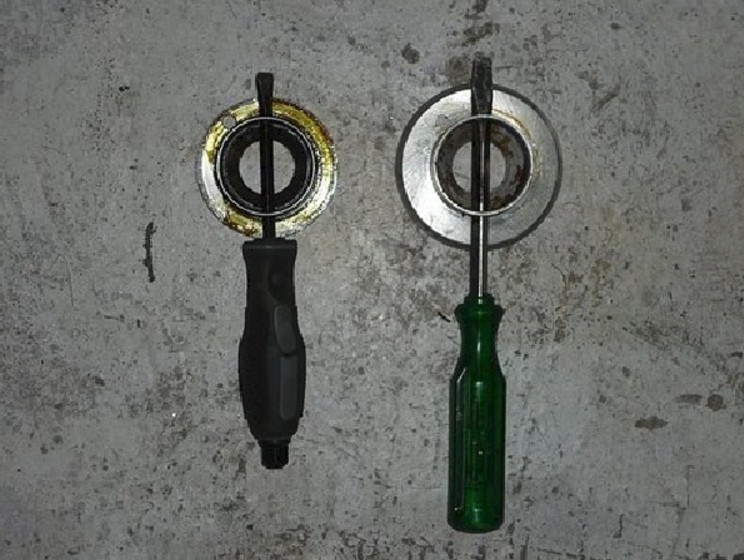

I was roving through the archives (from 2007) and found some more comments on engine breathers. I was actually looking at camshaft heat treatments, such as (from Nestor) nitrided camshafts – Hardness: HR15N 84/86 Depth RHV-HV0,1 800/850 for those who care about such things and carburisation.
General info on these processes:
https://en.wikipedia.org/wiki/Nitriding
https://en.wikipedia.org/wiki/Carburizing
Then the conversation turned to engine breathers…
comment nestormankho:
I ran my engine without the timed breather for a few thousand km (acting on the advice of a wizened cossack expert who reckoned they didn’t do so much) and had an oil trap in the vent line down to the carb inlet tract. No problems on UK roads – lots of acceleration and deceleration going around corners and up and down hills. Here in NZ with long flat straight roads on the Canterbury plain, it seemed to be a different story, with quite significant amounts of oil being hocked out through the breather.
Anyway, the timed breather is back in now – the worst you could say of it is that it acts as a spacer to stop the cam pinion from riding forward on the camshaft…
ttfn, Nick
comment msn-grendel650:
Thing to remember about the timed breather… someone spent a hell of a klot of time designing it so it was a part of the motor. Yeah you can take them out. But generally, I have never found them to be an issue, over a lot of miles now!
Just my tuppence worth! G.
comment machrat:
The timed breather, makes an engine work much easier, keeps dirt from being sucked into the engine, as designed, they work much better than any pcv valve, with the timed vent you will consume less oil, and have fewer fouled plugs……my nickels worth….Ken
comment serious-black:
A couple of years ago I connected a pressure gauge up to the oil filler hole so I could actually see what was happening to crankcase pressure. At all rpm`s the needle on the gauge was sucked firmly to the stop under the zero. Only at idle did it come off the stop and even then there was a slight vacuum. The engine wasn`t in particularly good health either. That experiment convinced me to leave the breather well alone.
comment machrat:
….J.D. Thing to remember is that the vent is pumping out heated air from the crankcase, if one insulates this hose to where it remains above freezing, you are good to go… This is what we did with the little Piper Cubs and such in the winter, commonly done in Alaska also, later airplanes are more tightly cowled in and don’t require this insulating tech…..I don’t really go that far in -10C…just maybe a cool beer beckons………Ken
comment JD:
the book says to prevent the breather tube blocking up (with ice?) it is recommended to remove the rubber pipe, if the motorcycle is operated at temperatures below -10C. (on the earlier OHV 650s the breather tube was just a rubber pipe that connects to the air cleaner. Take yer pipe off Ken. -10C there?
end of comments from 14 years ago!